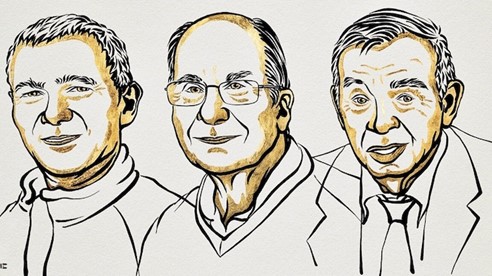PREVIOUS
Nobel prize in chemistry 2023
October 9 , 2023
737 days
1331
0
- The 2023 Nobel Prize in chemistry was awarded to Moungi G. Bawendi, Louis E. Brus and Alexei I. Ekimov.
- They were awarded for the discovery and synthesis of quantum dots.
- In the early 1980s, Dr. Ekimov succeeded in creating size-dependent quantum effects in coloured glass.
- In 1983, Dr. Brus and his colleagues went a step ahead and prepared similar crystals in a liquid solution, rather than in a glass.
- Finally, in 1993, Dr. Bawendi and his coworkers developed a technique to make these peculiar crystals— i.e., the quantum dots—of well-defined sizes and with high optical quality.
- These nanoparticles have wide-ranging applications across fields like electronics, advanced surgery, and quantum computing.
- Quantum dots are particles that are a few nanometres wide.
- They exhibit unique optical properties due to their small physical size.
- Their structure and atomic composition are the same as bulk materials, but the properties of the latter don’t depend on their size.
- Quantum dots are also used in photovoltaic cells to improve the absorption and efficiency in converting solar light into electricity.

Leave a Reply
Your Comment is awaiting moderation.


